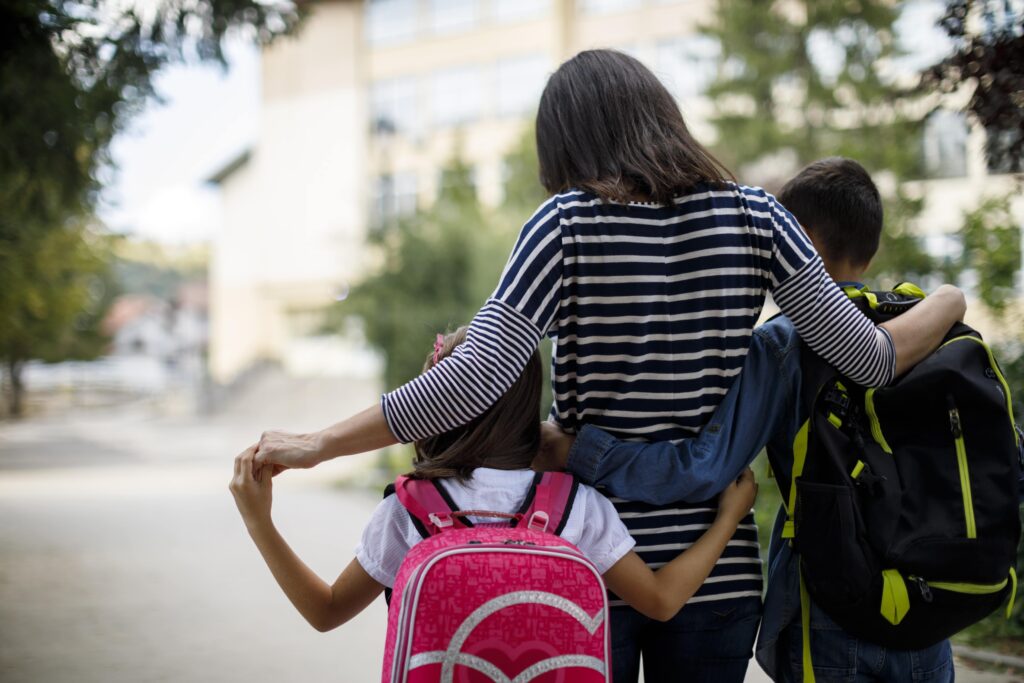Earlier this year we updated you on the Department for Education’s consultation regarding the proposed changes to Keeping Children Safe in Education (KCSIE). The consultation closed in March, and the updated KCSIE guidance which incorporates the findings of that consultation, has now been published. The updated version comes into effect from 1 September 2022, but in the meantime, KCSIE 2021 continues to apply. The new version can be accessed here:
Keeping children safe in education 2022 (publishing.service.gov.uk).
The good news is that there are not many significant changes this year, following some extensive amendments over recent years. The vast majority of changes are to add clarity. This year, the main changes include:
General changes:
- A definition of perpetrator and of victim has been helpfully included in the Summary section of the guidance. These definitions have been taken from the Sexual Violence and Sexual Harassment guidance (which has now been completely absorbed into KCSIE, and is consequently now statutory guidance which schools must follow) so schools should be familiar with these definitions.
- There has been a change in language throughout KCSIE from peer-on-peer abuse to child-on-child abuse, and with reference to abuse in intimate personal relationships between peers, this is now referred to as ‘teenage relationship abuse’ throughout.
Part One (Safeguarding Information for all staff)
- Clarity that there should be a staff behaviour policy or code of conduct covering topics such as low-level concerns, allegations against staff and whistleblowing (para 13).
- Paragraph 18 has been reworded to make clear that children should never be made to feel like they are creating a problem for reporting any form of abuse and/or neglect, not just sexual abuse or harassment as per the previous wording.
- At paragraph 19 there is new wording which recognises that children may not be ready to make a report, or may not know how to tell someone they are being abused, exploited or neglected. It includes an emphasis on staff having ‘professional curiosity’ and speaking to the Designated Safeguarding Lead (DSL) in light of any concerns. This is echoed in paragraph 21, which reminds staff of the early signs of abuse and neglect. More examples of indicative behaviours are also included at paragraph 31.
- More examples of extra-familial harm are now also included at paragraph 23, and the definition of abuse at paragraph 26 now includes a definition of ‘harm’.
- Clarity is provided in the footnotes on page 12 that consensual image sharing between children of the same age may not amount to abuse and may require a different approach.
- Additional guidance regarding domestic abuse as a specific safeguarding concern is now included at paragraph 43.
- There is a reminder that schools and colleges should have policies and procedures in place for managing any safeguarding concern no matter how small. Paragraphs 71 to 73 also now set out clearly how these concerns should be handled, dependent on whether they do, or do not, meet the harm test
Part Two (Management of Safeguarding)
- There is a new obligation for governing bodies to ensure that all governors and trustees receive appropriate safeguarding and child protection (including online) training at induction (and regular updates thereafter). This is to equip them with the necessary knowledge to challenge, test and assure themselves that the school’s safeguarding policies are effective and robust (paragraph 81).
- New guidance on the obligations regarding safeguarding, sexual violence and harassment under the Human Rights Act 1998, the Equality Act 2010 and the Public Sector Equality Duty (for those that are subject to it) is now included at paragraphs 83 – There are no new obligations, this just serves as a reminder of existing ones.
- It states that safeguarding policies and procedures need to be clear, transparent and readily available to parents and carers as well as staff and students (paragraph 96).
- Additional wording has been added to extend the existing requirement for schools to take a proportionate risk approach regarding information provided to temporary staff and volunteers, to now include contractors (paragraph 100).
- Guidance on the role of the DSL has been moved to Annex C for clarity.
- Additional information regarding the timescales for sharing child protection files for transferring students has been added at paragraph 121.
- The guidance on teaching safeguarding to children has been updated and now includes additional information about the new Relationships Education curriculum (paragraphs 128 – 130).
- There is a change of wording to reflect that it is the governing body’s responsibility (not the school’s) to ensure that online safety is a running theme in the school’s approach to safeguarding (paragraph 136).
- Recognition that mobile phones and smart technology can be used to bully children (paragraph 137).
- Reminder that schools should use its communications to parents to reinforce online safety at home, and that schools should inform parents what their child is being asked to do online as part of their schooling (paragraph 139).
- Schools should review their IT filter and monitoring systems regularly and staff should be made aware of how to escalate concerns when identified. KCSIE now references a tool by the South West Grid for Learning for schools to check whether their current filtering provider is signed up to relevant lists (paragraphs 140 – 141).
- The new KCSIE recognises that LGBT children (paragraph 202 – 204) may be at additional risk of safeguarding concerns.
- There is additional guidance regarding SEND children, which recognises that they have additional vulnerabilities that schools need to be aware of in a boarding setting (paragraph 158) and that they face challenges online and offline, in particular in relation to children with cognitive understanding issues as they may struggle to distinguish between fact and fiction online (paragraph 198). Further resources for supporting SEND children is now included at paragraph 201.
- Last year, guidance was included regarding the use of school facilities for non-school activities (for example, summer camps). The new KCSIE 2022 has clarified that these safeguarding obligations apply even if the children in attendance attend the host school or not (paragraph 166).
- The role of the virtual school head has also been extended to include strategic oversight for education attendance, attainment, and the progress for children with a social worker (paragraph 194).
Part Three (Safer Recruitment)
- Clarity has been added regarding when a CV can be accepted for applicants. KCSIE 2022 makes clear that a CV will only be acceptable alongside an application form, not instead of (paragraph 214).
- As part of the shortlisting process, and for due diligence, schools should now carry out online searches on shortlisted candidates to help identify publically reported incidents which can be explored with a candidate at interview (paragraph 220).
- Clarity that references should include the facts (not opinions) of any substantiated safeguarding concerns/allegations which meet the harm threshold, but should not include unsubstantiated, unfounded, false or malicious allegations, even if they are repeated allegations (paragraph 223).
- More guidance is included about DBS checks for existing volunteers and professional visitors (paragraphs 301 and 311).
- Interestingly, the wording regarding suspension which made clear it should be used as a last resort has been removed in KCSIE 2022. It does however continue to emphasise that suspension following an allegation against staff should not be an automatic response, and that the school should make an informed decision about suspension in the context of the allegation.
Part Four (Safeguarding concerns and allegations about staff)
Some clarity to the low-level concerns guidance has been added following the consultation earlier this year. In particular:
- The list of examples no longer includes “the use of inappropriate, sexualised, intimidating or offensive language” as an example of a low-level concern (paragraph 425)
- Further information has been provided to provide clarity on the process for sharing low level concerns. There is inclusion of a reminder that schools can liaise with the Local Authority Designated Officer (LADO) regarding low level concerns where there is any doubt about whether a report should be made (paragraphs 433-435).
Part Five (Child-on-child sexual violence and sexual harassment)
- Throughout Part Five there is now an emphasis of the types of child-on-child behaviours and warning signs for child-on-child abuse, including new guidance on how to manage allegations of abuse, taken largely from the former Sexual Violence and Sexual Harassment standalone guidance. Case studies have also been included throughout to add context and assist schools.
- One of the important changes is the inclusion of a reminder that when a child has made a report, it is important to explain that the law is in place to protect children rather than criminalise them. Care should be taken to explain this to the child in such a way that avoids alarming or distressing them (paragraph 468).
- A new section regarding confidentiality and anonymity is now included (paragraphs 470 – 478).
- Clarity that a risk and needs assessment following a report of sexual violence should include the time and location of an alleged incident and details of any action required to make the location safer (paragraph 479).
- The list of considerations at paragraph 482 has now been updated to recognise that children of “well known social standing” can contribute to a power imbalance in the context of child-on-child abuse.
- New sections regarding disciplinary action against pupils (paragraphs 543 – 545) and working with parents (paragraphs 546 – 551) is now added.
- Recognition that schools and colleges, as relevant agencies, should be part of discussions with statutory safeguarding partners to agree the levels for the different types of assessment and services to be commissioned and delivered, as part of the local arrangements (paragraph 492).
- Reminder that children may exhibit differing signs of trauma and responses to their experience, and that schools should remain alert to the possible challenges of detecting those signs and be sensitive to the needs of the child (paragraph 533).
Annexes
- Annex C continues to include information about the role of the DSL. Some of the information previously included in the main body of the guidance has now been deleted and rehomed here. The only ‘new’ piece of information to be aware of is a reminder that the DSL must be aware that a child requires an appropriate adult when being interviewed by police and in certain circumstances.
- The previous Annex D (Online Safety) has been removed. Guidance has been incorporated throughout KCSIE 2022 instead, and there has been an added emphasis in Annex A that technology is a significant component in safeguarding issues and recognising the role of online abuse in safeguarding the wellbeing of children.
What should you do now?
We would encourage schools and colleges to review their policies and procedures as soon as possible, in readiness for September. As always, there is a helpful table at Annex F of KCSIE 2022 which summarises the substantive changes from the September 2021 version, which may be useful, alongside this note, when undertaking this work.
If anything is unclear, or if schools have any queries about the impact of the revised guidance, do contact us.







